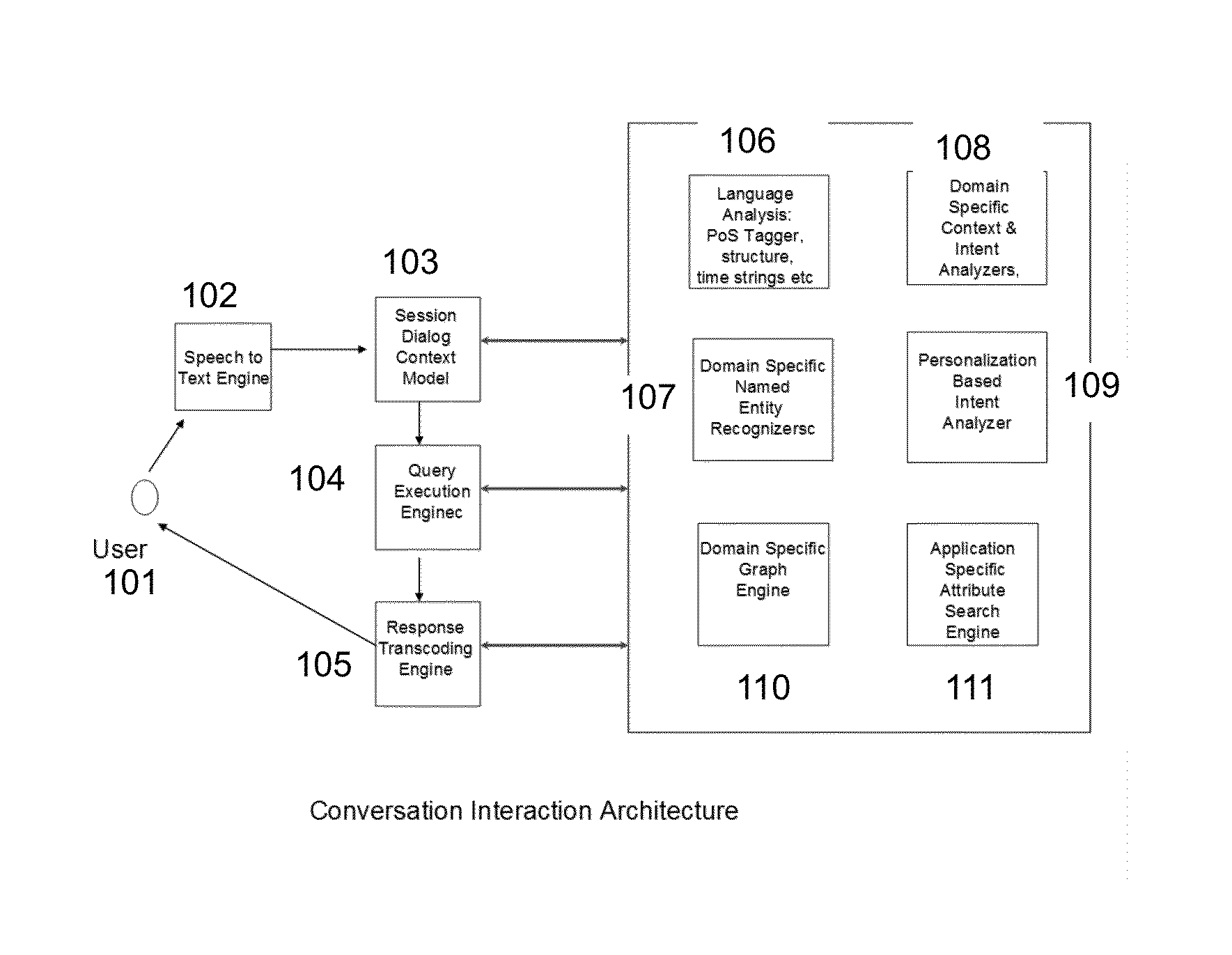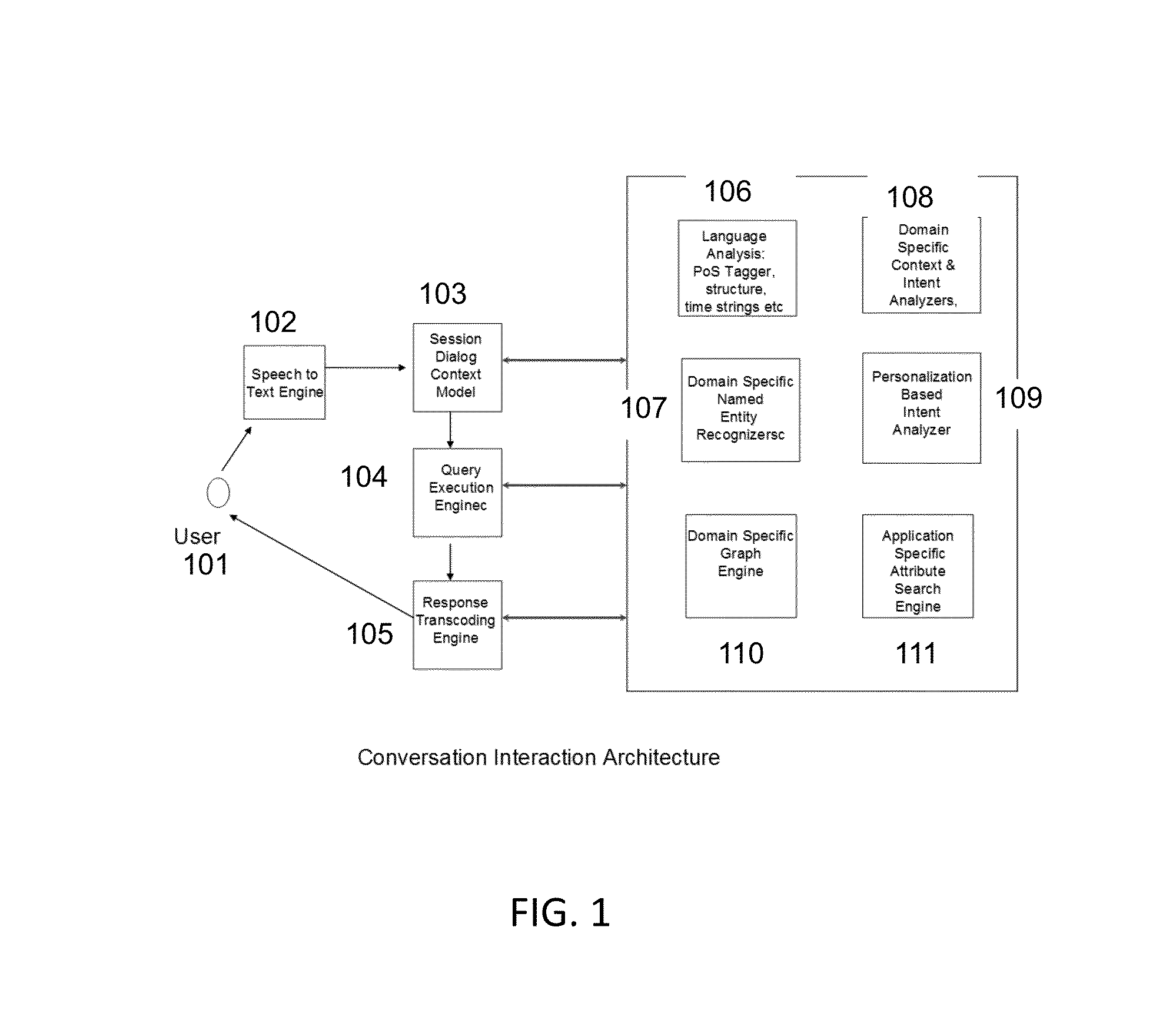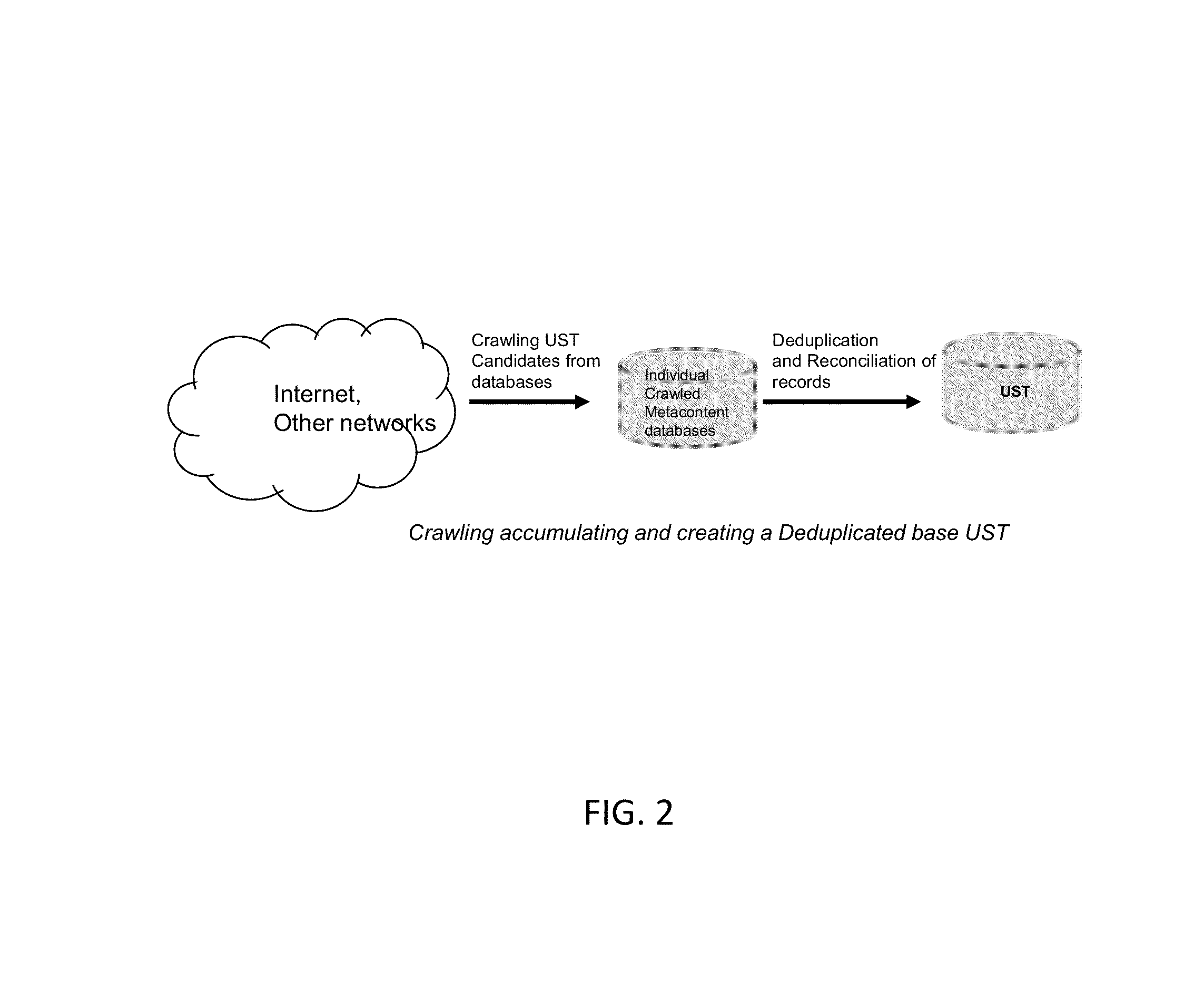Disambiguating user intent in conversational interaction system for large corpus information retrieval
- Summary
- Abstract
- Description
- Claims
- Application Information
AI Technical Summary
Benefits of technology
Problems solved by technology
Method used
Image
Examples
case 1
[0124]Personalization will be applied since “sox” has an ambiguity index associated with it. The following provide more examples of user's personal graph assisting in resolving ambiguity in user input and to personalize results to match user's interest:[0125]User: “when are the sox playing San Francisco Giants”[0126] Red Sox is in the user's signature[0127]Response: “the Boston Red Sox are not playing the San Francisco Giants this season”[0128]Case 2: Red Sox is not in the user's signature[0129]A: “Did you mean the Boston Red Sox or the Chicago White Sox”
Note that although one of the entities, San Francisco Giants, is well specified (the ambiguity index is “low”), we still need to use personalization to disambiguate the other entity “sox” (which has a “high” ambiguity index). To summarize, “ambiguity index” of “high” means use “personal graph” to resolve ambiguity but once the ambiguity is resolved, if it becomes a case of a “very precisely specified entity” and no “personalization”...
PUM
 Login to View More
Login to View More Abstract
Description
Claims
Application Information
 Login to View More
Login to View More - R&D
- Intellectual Property
- Life Sciences
- Materials
- Tech Scout
- Unparalleled Data Quality
- Higher Quality Content
- 60% Fewer Hallucinations
Browse by: Latest US Patents, China's latest patents, Technical Efficacy Thesaurus, Application Domain, Technology Topic, Popular Technical Reports.
© 2025 PatSnap. All rights reserved.Legal|Privacy policy|Modern Slavery Act Transparency Statement|Sitemap|About US| Contact US: help@patsnap.com



